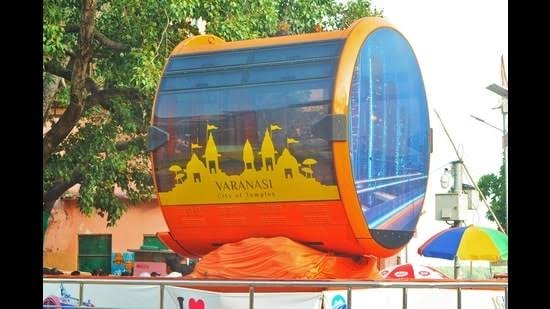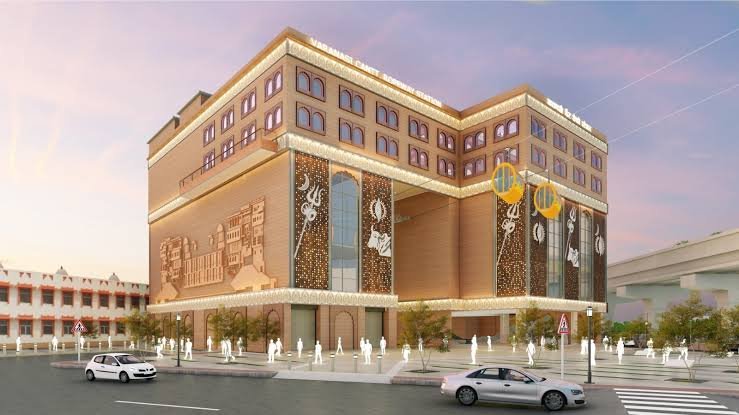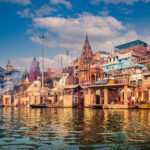Ropeway Station Varanasi: Why Godowlia Location is Being Reconsidered and What Lies Ahead
The Varanasi Ropeway Project is a groundbreaking initiative aimed at revolutionizing urban mobility in one of India’s oldest cities. However, the decision to shift the planned ropeway station from its initial location at Godowlia has become a hot topic. In this article, we delve into the project’s significance, the reasons behind this reconsideration, potential new locations, and its impact on the timeline and the city’s development.
Introduction to the Varanasi Ropeway Project
Varanasi, one of the most revered cities in the world, is known for its vibrant ghats, historical temples, and bustling streets. While the city’s charm attracts millions of visitors every year, its growing population and the influx of tourists have led to significant traffic congestion, especially in central areas like Godowlia.
The Varanasi Ropeway Project is envisioned as a solution to ease the city’s traffic woes and enhance connectivity. By introducing a state-of-the-art cable car system, the project aims to provide an eco-friendly, time-saving mode of transport.

One of the critical components of the project is the ropeway station, the starting and ending point for passengers. While the Godowlia crossing was initially chosen for its strategic importance, the location has sparked opposition from local stakeholders, leading to a reevaluation of its placement.
What is a Ropeway Station, and Why is its Location Critical?
A ropeway station is the backbone of any cable car system. It serves as the hub where passengers board and disembark. For urban transport systems, the location of a ropeway station is crucial for several reasons:
- Accessibility: It must be easily reachable by commuters and close to key destinations.
- Traffic Flow: Its placement should alleviate, not exacerbate, traffic congestion in the area.
- Cultural Integration: Especially in heritage-rich cities like Varanasi, the station must blend seamlessly with the surroundings.
- Space Availability: Adequate space is needed for infrastructure, operations, and passenger amenities.
In the case of Varanasi, the Godowlia crossing is both a blessing and a challenge. While it is close to iconic landmarks like the Kashi Vishwanath Temple and the Dashashwamedh Ghat, it is also one of the city’s busiest and most culturally sensitive areas.
Why Was Godowlia Reconsidered as the Ropeway Station Location?
The reconsideration of Godowlia as a ropeway station location stems from a variety of factors:
1. Public Opposition
Local residents, traders, and cultural enthusiasts expressed concerns about the potential impact on Godowlia’s heritage and aesthetics. The fear is that modern infrastructure could overshadow the area’s historical significance.

2. Traffic Congestion
Godowlia is already a traffic bottleneck, with thousands of vehicles and pedestrians passing through daily. Constructing a ropeway station here could worsen the situation temporarily, leading to more chaos.
3. Preservation of Heritage
As one of Varanasi’s iconic landmarks, the Godowlia crossing holds immense cultural value. Many stakeholders believe that constructing a modern station here would disrupt the traditional charm of the area.
4. CM Yogi Adityanath’s Directives
Chief Minister Yogi Adityanath emphasized the importance of respecting public sentiment and finding a mutually agreeable solution. He instructed officials to explore alternative locations in consultation with local representatives.
Impact of Reconsidering Godowlia as a Ropeway Station Location
Shifting the location of a major project component like the ropeway station has significant implications:
1. Timeline Delays
Officials estimate that revising the Detailed Project Report (DPR) and redesigning infrastructure could delay the project by six months to a year.
2. Financial Implications
Parts for the station, sourced from Switzerland, have already been manufactured based on the original plans. Relocating the station would require modifications, potentially increasing costs.
3. Stakeholder Coordination
Authorities must now work closely with community leaders, traders, and residents to ensure that the new location is accepted by all stakeholders.
Alternative Locations for the Ropeway Station
In light of these challenges, officials are now exploring potential locations between Godowlia and Girjaghar. Some of the options under consideration include:
1. Girjaghar Crossing
This location offers ample space and is close to major tourist spots. It could serve as a viable alternative without compromising accessibility.
2. Chowk Area
Located slightly away from Godowlia, this area has the advantage of reducing congestion while still being centrally located.
3. Bhelupur
This area is less crowded and could accommodate the station’s infrastructure without disrupting traffic or heritage sites.
Government’s Stance on Public Sentiment
During a meeting at the Circuit House, CM Yogi Adityanath stressed the importance of community involvement in urban development projects. His key directives include:

- Listening to public concerns and ensuring their inclusion in decision-making.
- Finding a location that minimizes disruption to daily life.
- Preserving Varanasi’s cultural and historical significance.
This approach highlights the government’s commitment to sustainable and inclusive development.
Technological Highlights of the Varanasi Ropeway Project
The ropeway project is not just about transportation; it is a technological marvel that incorporates several advanced features:
1. Swiss-Made Components
Parts for the project are sourced from Switzerland, ensuring world-class quality and safety.
2. Eco-Friendly Systems
The ropeway will operate on green technology, reducing carbon emissions and promoting sustainable urban transport.
3. Advanced Safety Measures
State-of-the-art safety features, including backup systems and emergency protocols, will ensure passenger security.
4. Smart Ticketing
The project will introduce digital payment options for seamless travel, eliminating long queues.
Benefits of the Ropeway Station and Project
Once completed, the Varanasi Ropeway Project will offer several benefits to residents, tourists, and the city at large:
1. Decongesting Traffic
The ropeway will serve as an alternative mode of transport, reducing the burden on road networks.
2. Boosting Tourism
By providing easier access to landmarks like the Kashi Vishwanath Temple, the project will enhance the tourist experience and boost the local economy.
3. Time Efficiency
Cable cars can bypass traffic jams, saving valuable time for commuters.
4. Environmental Impact
The project promotes sustainable transport, reducing pollution and fuel consumption.
Challenges in Implementing the Changes
While the decision to relocate the station is well-intentioned, it comes with its own set of challenges:
- Revising Plans: Altering the DPR and redesigning infrastructure will require additional time and resources.
- Cost Overruns: Modifications and delays could increase the overall project budget.
- Community Acceptance: Ensuring widespread approval for the new location is critical for the project’s success.
A Vision for the Future: Ropeways as Urban Mobility Solutions
The Varanasi Ropeway Project is a step towards modernizing urban transport in India. By combining advanced technology with community-centric planning, it sets a benchmark for similar projects in other cities.
Conclusion
The ropeway station in Varanasi represents more than just a transport hub; it symbolizes the city’s journey towards modernization while preserving its rich heritage. The reconsideration of Godowlia as the station’s location demonstrates the government’s commitment to public welfare and sustainable development.

Under CM Yogi Adityanath’s leadership, the Varanasi Ropeway Project is poised to become a landmark achievement, offering efficient, eco-friendly, and culturally sensitive urban mobility. As stakeholders work towards finalizing a new location, the project continues to inspire hope for a smarter, more connected Varanasi.
This expanded discussion not only emphasizes the importance of the ropeway station but also highlights its role in shaping the future of Varanasi. By addressing challenges and seizing opportunities, the project aims to deliver on its promise of transforming urban mobility in India’s spiritual capital.







